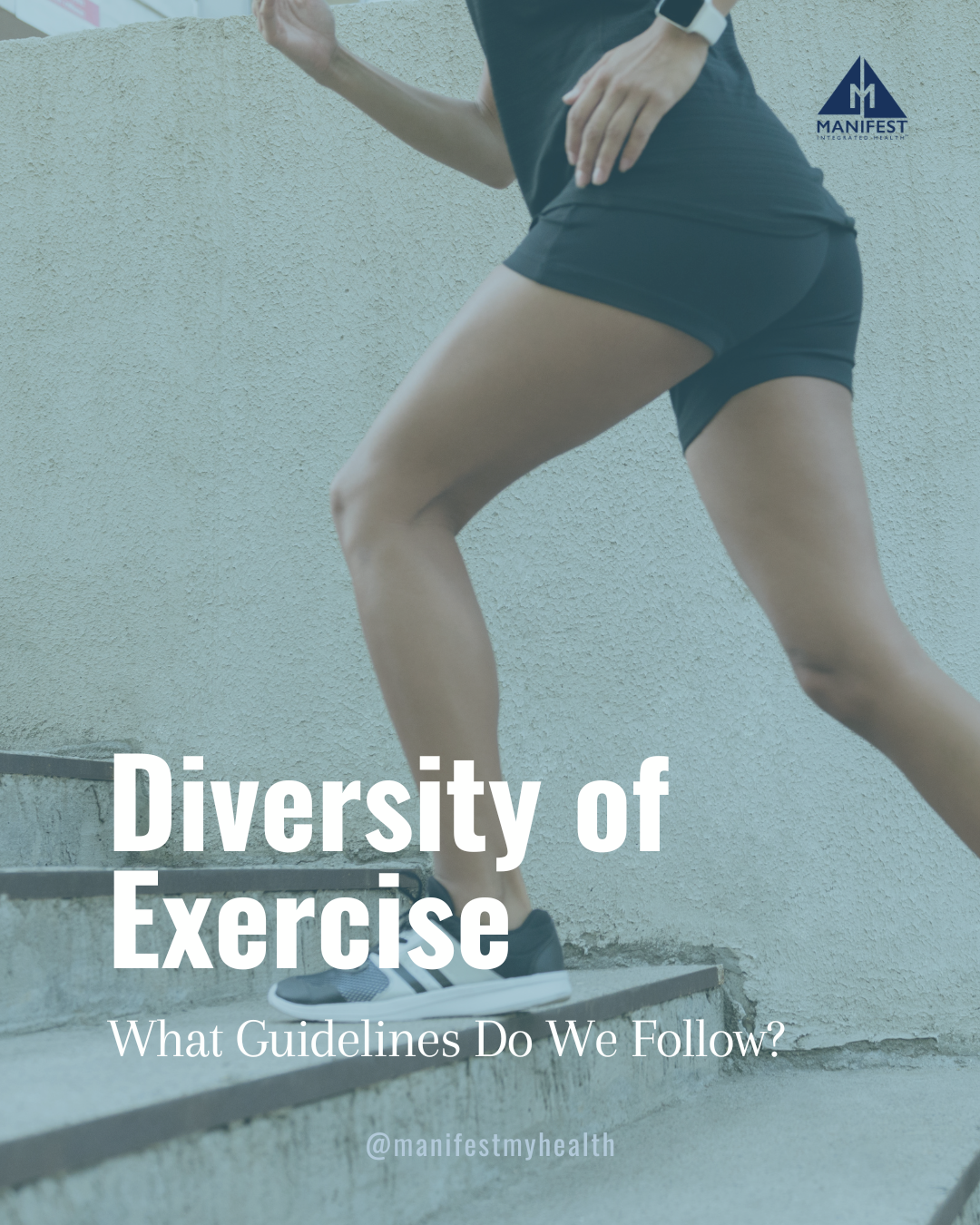Diversity of Exercise: What Guidelines Do We Follow?
When it comes to exercise, there’s a lot of noise out there.
“Do more cardio!”
“No, lift heavy!”
“Wait, just walk more!”
So, what’s actually backed by science?
Luckily, the American College of Sports Medicine (ACSM) and the American Heart Association (AHA) have given us clear, no-nonsense guidelines to follow and they’re more flexible than you might think.
How Much Cardio Do We Really Need?
ACSM recommends:
150 minutes of moderate-intensity aerobic activity each week (think brisk walking or slow biking),
OR75 minutes of vigorous-intensity aerobic activity (think jogging or fast biking),
ORA combo of both.
That’s per week, not per day. Break it up however you want. 20–30 minutes at a time works just fine.
And here’s the best part: accumulation counts. Every little bit adds up toward your total minutes. That quick walk during your kid’s soccer practice? Counts. Pacing while you’re on a work call? Counts. Power walking through the grocery store because you forgot to defrost chicken for dinner? Counts (and might also count as stress management).
Step It Up…Literally
If you’re more of a numbers person, tracking steps can be an easy way to keep tabs on your activity. The AHA suggests aiming for 10,000 steps a day for overall health, especially for your heart.
Pro tip: look for “pocket movement opportunities” such as those random in-between times in your day:
Waiting in the school pick-up line
Lunch breaks
Standing around at sports practices
Between errands
Those 5–10 minute bursts really add up.
Don’t Forget the Strength Work
Cardio’s great for your heart, but your muscles need love, too. ACSM recommends muscle-strengthening activities for all major muscle groups at least two days a week.
This doesn’t have to mean living in the weight room. Two sessions a week could be:
8–10 exercises (covering upper body, lower body, and core)
Moderate or greater intensity (you should feel challenged)
Bodyweight moves, resistance bands, dumbbells, or gym machines — your choice
The benefits? Stronger muscles, better metabolism, improved bone health, and just feeling more capable in your everyday life.
The Bottom Line
Exercise doesn’t have to be all-or-nothing, and it definitely doesn’t have to be all-at-once. Whether it’s structured workouts, step-count goals, or quick movement breaks, it all counts.
So, find what you enjoy, mix it up, and keep moving — your body (and your future self) will thank you.

